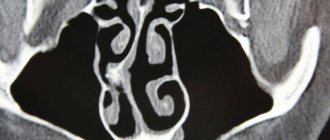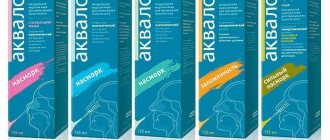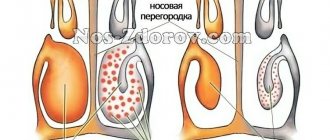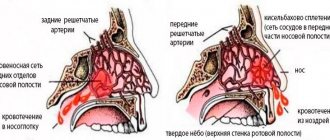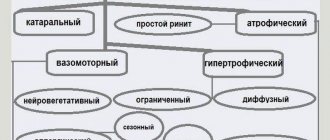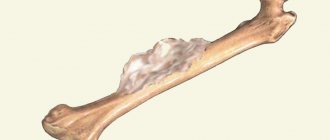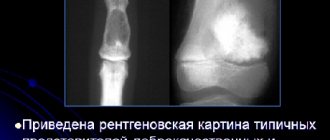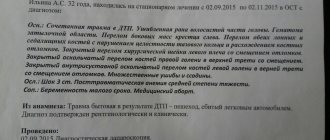Which athletes are more likely to break their nose?
The championship in this traumatic ranking, of course, belongs to boxers. Actually, this damage has long become their calling card, like knocked out teeth in hockey players and broken ears in wrestlers. However, in other contact and team sports, fractures of the nasal bones are a fairly common occurrence.
Take football, for example, where collisions in a horse fight for the ball very often end in a similar injury. For example, CSKA and Russian national team defender Mario Fernandez, a masterful header, broke his nose three times during his career! And that's not counting the five concussions.
To be fair, it must be said that even in boxing, damage to the nose is not always a fracture. More often than not, athletes end up with bruises. It all depends on the fighter’s preparedness or anatomical features. The longer the nose, the greater the chance that it will be broken in a fight or in the ring. But the flattened one is naturally more durable.
Symptoms of a nasal bone fracture
The severity of such an injury depends on the force and angle at which the blow was struck. This usually results in deformation of the nose. For example, in boxing the most common fractures of the nasal bones are displaced. With a very strong direct blow, the nose is literally flattened and pressed inward. Or crushed bones tear the soft tissue and protrude outward. Both fractures are the most dangerous. First of all, a partial or complete violation of the respiratory function of the nose.
A fracture of the nasal bones without displacement can be identified by the following characteristic symptoms:
- pain shock;
- nosebleeds;
- copious mucous discharge from the nose;
- swelling and swelling;
- extensive hematoma extending to the periorbital area.
A fracture of the nasal bones with displacement of fragments is often open. An inevitable consequence is a fracture of the nasal septum. If it grows together incorrectly, it is fraught with many problems: from banal snoring to chronic respiratory diseases.
Diagnostics
Diagnosis and treatment are carried out by a traumatologist, maxillofacial surgeon, and ENT doctor.
To establish a diagnosis, a specialist carries out a number of activities:
- Inspection. External signs of a fracture are detected - pain, hematomas, deformation, bleeding, damage to the skin, crepitus of fragments upon palpation. The condition of the nasal cavity and nasal passages is assessed.
- X-ray (photo). Radiography is performed in two projections. The location and nature of the damage, the number of bone parts and the degree of their displacement are clarified.
- CT scan. It is carried out in difficult cases and allows you to assess the condition of the nasal passages, sinuses, and identify possible damage to the bones of the skull. The procedure is more informative than an x-ray, but its price is quite high.
Based on clinical and instrumental studies, a final diagnosis is made and appropriate treatment is prescribed.
First of all, the doctor asks the patient about the mechanism of injury. After that, he examines his nose.
When palpated, a slight crunch may be felt. In addition, when feeling the nose, the patient notes pain. Next, rhinoscopy is performed - examination of the nasal cavity to clarify the diagnosis.
Before it is performed, anesthesia is usually performed - anesthesia of the nasal cavity, for example, by spraying with a 10% lidocaine solution. Another method for examining the nasal cavity is endoscopy.
In this case, a thin flexible tube is inserted into the nasal cavity, at the end of which there is a light bulb and a video camera lens. To clarify the nature of the fracture, an x-ray of the nasal bones is taken in a lateral projection.
First aid for a broken nasal bone
As a rule, if the nose is broken, the athlete immediately drops out of the competition. However, even such a serious injury often cannot drive boxers out of the ring. The fight continues until the athlete himself gives a signal to stop. Or the judge will do it if he considers the risk unjustified. This usually happens when nosebleeds cannot be stopped for a long time.
As a rule, at any fights or other competitions, a doctor is on duty. If there is no doctor nearby, you can provide first aid yourself. First of all, you need to apply cold to the damaged area. This will prevent the appearance of severe swelling and bruises, and will also help stop the bleeding. Many people mistakenly believe that you can stop nosebleeds by holding your head high. In reality this is not the case. It's better to tilt it slightly to the side.
If you have any deformities in the nasal area, you should never adjust the bones yourself! Even professionals often cannot do this without special tools.
Malformations of the nasal septum
Clinically manifested are those defects that interfere with normal nasal breathing and can lead to certain complications requiring surgical treatment.
Symptoms and clinical course
. The main manifestation of a deviated nasal septum is a violation of nasal breathing, which is usually accompanied by a violation of the sense of smell. During rhinoscopy, various forms of curvature of the nasal septum are noted (Fig. 6). Contact ridges and spines (spina irritativa), resting on the nasal turbinates, cause irritation of their sensory and autonomic nerve endings, which causes vasomotor disorders.
Rice. 6.
Forms of curvature of the nasal septum: 1 - thickening, ridge and curvature of the nasal septum; 2 - convexital (concave-convex) curvature of the nasal septum; 3 - S-shaped curvature; 4 - angular curvature
Treatment of curvatures of the nasal septum, when they are manifested by corresponding disturbances in nasal breathing, sense of smell and other complications, is only surgical. The method and extent of surgical intervention is determined by the type of deformation of the nasal septum. If there are thorns, spurs, or small ridges, they are limited to removing them only. In case of significant curvatures that extend to most of the septum, plastic redressing or resection is resorted to.
The Killian operation, in which almost all of its cartilage is removed or with the preservation of individual fragments of its cartilage, even while preserving the perichondrium and mucous membrane, often leads to their atrophy, which may be followed by perforation of the septum. To eliminate these complications, V.I. Voyachek proposed “submucosal redressing, or submucosal mobilization of the skeleton of the septum,” which consists of separating the mucous membrane with the perichondrium on one side from the cartilage and dissecting it (the cartilage) to form several discs, without cutting the perichondrium on the opposite side side. This technique makes the nasal septum mobile and susceptible to correction, which is performed by “pressing the nasal dilator” on the curved parts of the nasal septum that have become mobile. The nasal septum straightened in this way is fixed with a tight loop tamponade for 48 hours, then the tamponade is replaced by a lighter one, changed daily for 3-4 days.
In cases where the cartilage is sharply thickened, there are massive cartilaginous and bone ridges, this method is not applicable and other surgical approaches are required, based on the principles of endonasal rhinoplasty, of course, while preserving those structures that can be used for reconstruction of the septum. Such surgical interventions include the so-called septum operation, performed under local or general anesthesia and consisting of subperichondrial removal of curved parts of the septal cartilage. The operation ends with a loop nasal tamponade according to V. I. Voyachek. Tampons are removed after 1-2 days. In Fig. 7 shows the instruments used in operations on the nasal septum.
Rice. 7.
Special surgical instruments used in operations on the nasal septum: 1 - Hartmann's mirror for nasal endoscopy is used in the initial stages of septum surgery; 2 - Luke forceps are used to capture and remove parts of the nasal septum and resected bone fragments; 3 — a set of extended Killian mirrors for examining the deep parts of the nose; 4 - raspatory for detachment of the mucous membrane and perichondrium of the nasal septum
How long does it take for a nasal bone fracture to heal?
Recovery from such injuries is far from a quick process. Even a closed fracture of the nasal bones without deformation can take up to 3 months to heal. When opened, this period doubles. If the fracture is comminuted, then rehabilitation can take a whole year. In case of serious defects (for example, a fracture of the nasal septum), surgery cannot be avoided. If a nose with a hump does not give aesthetic pleasure, then again you will have to resort to the services of a plastic surgeon.
By the way, it is not at all necessary for athletes to take a break from their careers. Surely many have seen how some football players take to the field wearing fancy black half-face masks. This is a special protection that protects the injured nose from repeated damage. Such equipment, however, is no different in terms of convenience. Therefore, players are eagerly waiting for the bones to finally grow together.
Nose correction surgery
The main criterion that judicial representatives pay attention to when determining punishment is the severity of the harm caused to the victim’s health. It is determined by the conclusion of a forensic medical examination. There are several options for the development of events, depending on which one or another article of the Criminal Code of the Russian Federation is used:
- If the damage inflicted, according to the results of a forensic medical expert, did not cause a deterioration in the victim’s health, Article 116 of the Criminal Code of the Russian Federation is taken into account. This article provides for a small punishment in the form of forced or correctional labor. Article 116 of the Criminal Code of the Russian Federation.
How to speed up the healing of a fracture
To speed up rehabilitation after a fracture of the nasal bones, there are several important recommendations. First, try to avoid any impact on the damaged area . In such cases, it is even advised not to wear glasses for at least three weeks. You can only sleep on your back.
Secondly, don't overheat . This means that you will also have to forget about going to the bathhouse and sauna for a while. And, of course, it is necessary to adjust your diet . It should include more fresh vegetables, fruits and herbs, as well as foods rich in calcium and vitamin D3. However, even the most balanced diet will not help if calcium cannot be properly absorbed into bone tissue.
The Osteomed vitamin and mineral complex will help solve this problem . It contains easily digestible calcium in the form of citrate, as well as a special component of natural origin (HDBA organic complex), which stimulates regenerative processes in the bones. This combination helps speed up bone healing by an average of two weeks and reduce the risk of recurrent fractures.
Treatment
Treatment of nasal fractures depends primarily on the location and severity of the injury. It is very important that therapy begins as early as possible, so the most important thing in providing assistance for a broken nose is to ensure prompt access to specialists.
If there is severe bleeding, the doctor will first stop it by placing tampons soaked in special solutions into the patient’s nose. If the wound surface is contaminated, it will need to be cleaned and treated.
If the injury that caused the fracture occurred no more than 10 days ago, the doctor can do a closed reduction of the fracture, that is, he will try to put the bones in place manually. For this, local anesthesia is used, as well as special instruments.
First aid is carried out at the scene of injury. It consists of applying cold compresses, ice packs to the fracture site, and placing the patient in a sitting position (if the victim is in a horizontal position and unconscious, he is placed on his side in order to prevent blood from entering the lungs).
In the absence of obvious deformation, the introduction of tight gauze swabs is allowed to stop bleeding.
After providing first aid and transporting the victim to a hospital or emergency room, what to do next in case of a broken nose is decided by the doctor based on x-rays, survey data and examination.
Treatment must begin immediately after the injury, otherwise the fractures may heal incorrectly and lead to deformation of the nose. This will not only spoil the appearance, but also cause breathing problems.
How long the nose heals after a fracture depends on the nature of the injury. Therapy is carried out both in a hospital setting and on an outpatient basis.
Indications for hospitalization are the following types of fractures:
- open;
- with severe deformation and a large number of fragments;
- combined with damage to the skull, paranasal sinuses, and orbits.
Young children and people over 70 are also hospitalized.
Basic treatment
Depending on the damage, the patient is prescribed conservative treatment or surgery.
Drug therapy consists of administering antitetanus serum, taking painkillers and anti-inflammatory drugs, calcium supplements and a vitamin complex. Open fractures require antibiotic therapy. If the patient is undergoing outpatient treatment, medications can be purchased at the pharmacy. For ease of use, each package contains detailed instructions.
Simple fractures without displacement are treated symptomatically. How long does it take for an os nasale fracture to heal without displacement? Thanks to good blood supply, recovery occurs within 15-30 days.
Displaced fractures require reduction followed by internal or external fixation of the fragments. Reposition is carried out as early as possible. If for some reason this turns out to be impossible, the procedure is postponed until the swelling subsides. How long does it take for a displaced fracture of the os nasale to heal? In this case, the period is about a month.
Closed fractures heal faster than open fractures. But how long the injury heals also depends on the patient’s age and the presence of concomitant diseases.
Open fractures require surgical treatment. First, the wound is treated. Foreign bodies, small bone fragments, and necrotic tissue areas are removed. Then the fragments are repositioned and fixed. Next, a suture is applied. You can learn about the operation from the video in this article.
Rehabilitation
After eliminating the acute symptoms of the fracture, the patient is prescribed physiotherapeutic procedures:
- infrared irradiation - increases blood circulation and accelerates tissue regeneration;
- medicinal electrophoresis - delivers drugs directly to soft tissues;
- UHF therapy significantly reduces pain and improves immunity.
During the recovery period, the patient is recommended to sleep on his back to prevent pressure on the nose. For the same purpose, it is recommended to replace glasses with lenses.
Important! It is impossible to say with certainty about the timing of fracture healing. This happens individually for each person. How long a nasal fracture takes to heal is determined individually. Basically, patients are completely cured after 2-3 months, subject to timely treatment and proper therapy.
For minor injuries, treatment is carried out on an outpatient basis; for severe fractures, patients are hospitalized in the otolaryngology department. Patients with non-displaced fractures are treated with wounds, prescribed antibiotics, and given a referral for physical treatment.
If there is displacement, reposition the nasal bones on the day of admission. For patients with skull base fractures and liquorrhea, reduction is performed 2-3 weeks after the injury.
Lateral displacement is eliminated by finger pressure from the side opposite to the curvature. Correction of posterior displacement of fragments is carried out using a narrow elevator.
To keep the fragments in the correct position, reposition is completed with tamponade of the middle and upper nasal passages, and rubber tubes for breathing are installed in the lower passages. If necessary, external fixation of fragments is used with rollers attached with an adhesive plaster or a collodion bandage.
Sometimes fixation is not required. In case of severe comminuted fractures, the impossibility of conservative reduction and repeated displacement, rhinoplasty is indicated, which in case of damage to the septum is combined with septoplasty.
To keep the bones in the correct position, apply a bandage for two weeks.
A course of antibiotics is also prescribed. The person is given anesthesia, after which painkillers and immunomodulatory drugs are prescribed. A fixing plaster can also be applied. Forecasts for the future Recovery after a comminuted fracture of the nose will depend on the severity of the injury and the speed of going to the hospital.
Treatment of a non-displaced nasal fracture should be carried out on an outpatient basis, after consultation with a specialist. A non-displaced nasal fracture should be treated conservatively (does not require reduction).
If there are signs of nasal displacement, perform a nasal realignment procedure called reposition
How to treat a nasal fracture without displacement?
- For emergency treatment, the first step is to apply a cold compress to the fracture site.
- Further, for the purpose of treatment, it is recommended to use local anesthesia.
- If massive swelling of the mucous membrane is observed, then as an emergency treatment measure, vasoconstrictor drops should be instilled to prevent such complications as stenosis of the excretory ducts of the paranasal sinuses.
- In order to relieve swelling, topical ointments can be used as treatment drugs.
We invite you to read the article; it describes what drops and painkillers are recommended for use in the treatment of a broken nose.
But decongestants are not a method of treatment, but are used only as urgent therapy, since excessively frequent use of this type of drops can lead to disruption of the functional activity of the ciliated epithelium of the mucous membrane.
Surgical treatment is indicated only in the case of a combination with damage to adjacent areas of the facial skull, as well as if an infection has occurred with the development of an abscess or phlegmon. For uncomplicated fractures, surgical treatment is not indicated.
If combined damage to the orbit, as well as other bone formations of the skull, is observed, then this is an indication for additional consultation with a surgeon and a computed tomography scan before prescribing operations such as rhinoplasty and septoplasty.
To prevent possible complications, it is recommended to strictly follow the treatment plan.

